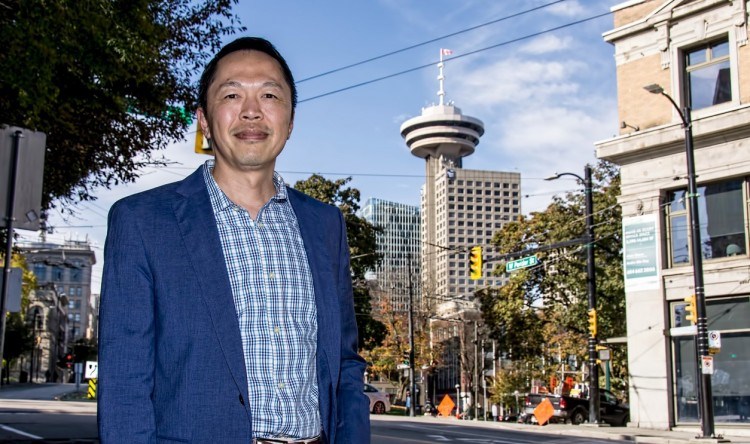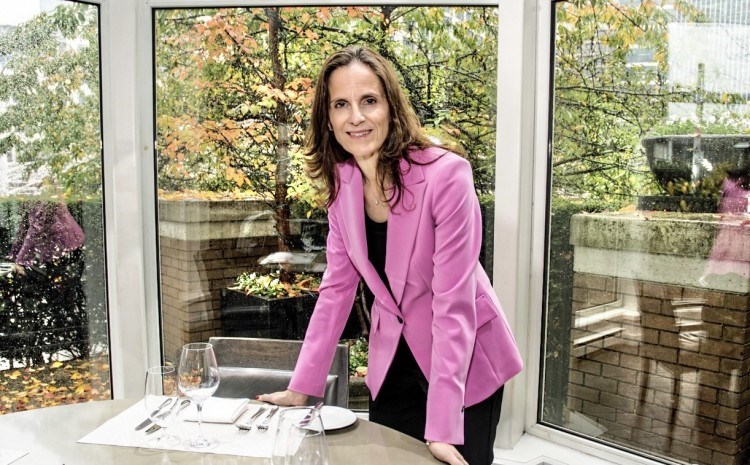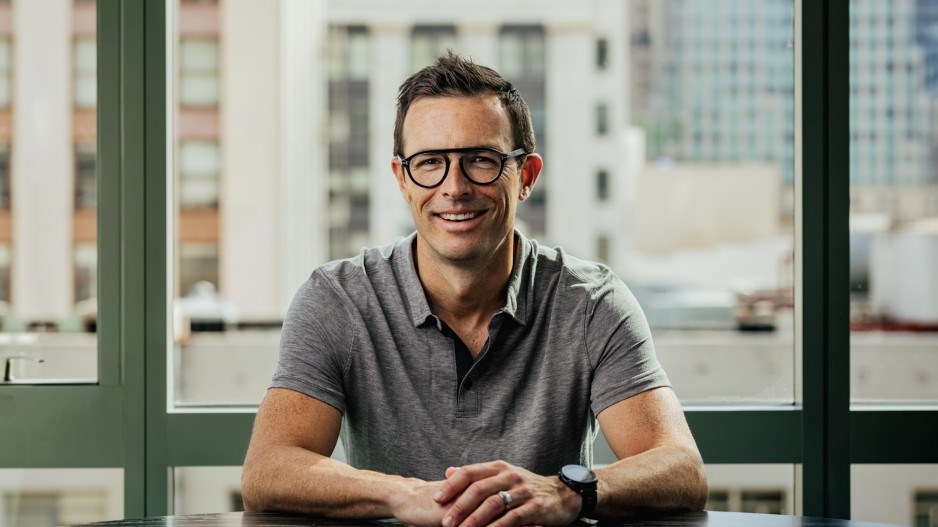B.C.’s 100 top-paid executives’ total compensation last year rose slightly, but not by as much as the average Canadian worker.
The average person on BIV’s newly released list of the top-paid 100 executives in B.C. made almost $4.87 million in 2022 – an amount that no doubt appears excessive to workers on shop floors across the country.
Statistics Canada has yet to reveal data for the average worker’s salary in 2022. The amount that the top-paid executives in B.C. made in 2022, however, was more than 82 times the $59,300 that the national number cruncher’s Labour Force Survey pins as the average Canadian worker’s wage for 2021.
Some small solace for workers is that their wages on average have been rising faster than that of top executives.
B.C. workers’ average weekly wages rose 3.9 per cent in 2021, 3.4 per cent in 2022 and are tracking four per cent in 2023, according to Statistics Canada.
This contrasts with a 2.79-per-cent compensation hike among those on BIV’s top-paid 100 executives in 2022, compared with 2021.
Those executives endured a 2.64-per-cent decline in total compensation in 2021, compared with 2020.
Top-paid executives’ pay can suddenly spike, however. In 2020, the executives on BIV’s top-paid 100 executives list saw pay soar a staggering 42.2 per cent.
One caveat in those calculations is that the same executives were not on BIV’s list each year. There can also be one-time anomalies in many executives’ compensation packages.
Executive pay increasingly aligned with corporate performance
Companies tend to pay executives differently than they do most workers, with salaries comprising a small part of executives’ compensation packages.
The lion’s share of many executives’ total compensation usually comes from share-based or options-based rewards, bonuses, pension benefits, long-term compensation and other perks instead of through a base salary.
Logan HR partner and compensation consultant Vince Chow told BIV that he has watched a long-term trend through his more than 25 years in his profession.
Executives have increasingly received a greater share of their compensation through bonuses and other non-salary benefits, he said.
“It is also a common principle that the CEO’s compensation, especially the variable part, should be heavily tied to the company’s performance,” Chow said.

Companies, such as Lululemon Athletica Inc. (Nasdaq:LULU), make clear in corporate filings that they have a compensation system that “rewards exceptional performance” in order to align executive benefits with value created for shareholders.
Lululemon CEO Calvin McDonald is the top-paid executive in the province. He made $20,378,652 in compensation in 2022, when his U.S.-denominated renumeration is converted into Canadian dollars.
Only about eight per cent, or $1,626,250 of McDonald’s total compensation came in the form of salary. The biggest contributing chunks to his out-sized compensation were $6,504,958 worth of options-based rewards and $6,504,797 in share-based awards.
Add in $5,691,875 in long-term compensation and another $50,772 in other compensation and McDonald topped the second-highest earning executive in the province, Telus Corp.’s (NYSE:TU; TSX:T) CEO Darren Entwistle, by $2,892,327.
Entwistle’s $17,486,325 pay package in 2022 came more than 90.8 per cent from rewards outside of his $1.6 million base salary. The bulk of his pay package came from $13,782,880 in share-based rewards. He also received a $1,082,880 bonus.
“When people are reading those numbers, they have to remember that the bonus paid this year was from last year's performance,” Chow said. “Publicly traded companies, like Telus, in their management information circulars, clearly show how they calculate executives' performances for previous years, and how that impacts their CEOs’ bonuses.”
Telus noted in its 2022 management information circular, for example, that an annual performance bonus “encourages strong performance against yearly corporate, business unit and individual objectives.”
It then elaborated with details of various metrics.
Chow said that by the time investors see how large a bonus top executives have received, it can be six months to a year after the bonus value was calculated for the previous year’s performance.
“Sometimes that bonus doesn't necessarily align with people’s current impression of the company’s performance,” he added.
One measure of corporate performance that shareholders prize is the company’s share price. Another is growth in the company’s market capitalization.
Telus saw its market capitalization rise in value by 25.59 per cent, to US$32.07 billion year-over-year at the end of 2021, which is the year for which Entwistle’s 2022 compensation and bonus would be tied.
Since then, Telus’ share price has struggled.
The company’s market capitalization fell 14.51 per cent to US$27.42 billion by the end of 2022. Its slide continued this year, given that earlier this month the company’s market capitalization fell to the US$24 billion range before rebounding.
Company cars, golf memberships no longer compensation components
Executives decades ago were more likely to receive perks such as company-paid golf club memberships or company cars than they are now, Chow said.
The trend, he said, has been to convert those perks into higher stock awards and cash.
“There was a generation about 20 years ago, when there were more perquisites, and first-class travel,” he said. “I think we passed those perquisite times a long time ago.”
Amar Doman agreed. He ranks No. 68 on BIV’s list of top-paid executives thanks solely to his role as chair and CEO at Doman Building Materials Group (TSX:BDM). He separately owns and oversees the large Futura Corp., and the BC Lions so his total take home pay from all sources is not publicly available.
“We don't pay for golf memberships or things like that –that was probably even a little before my time,” said Doman, who is in his early 50s. “Back in the day, some of the companies we acquired used to do that, but really, you don't hear about that anymore.”
Many of the CEOs on BIV’s list undoubtedly have spacious offices with glorious views but the trend through the decades has been for top executives to not be seen as aloof and apart from their teams.
“Nowadays, the higher level that you go up, you need to show more that you are down to earth,” Chow said. “The definition of leadership nowadays is about putting employees first.”
Many top executives have similarly sized offices to other executives, and in some cases companies provide workers with cubicles in prime real estate next to windows.
“We’ve got a full floor and a bit for the team on Melville Street, and I’ve just got a small office with a desk,” Doman said. “It does have two windows but it’s not a spacious corner office. It’s small, sparce and no different from other executives.”
Office size can be a touchy subject for companies. BIV emailed Lululemon to ask how big McDonald's office is, and whether it is similarly sized to those of other executives.
Lululemon spokeswoman Madi Wallace three days later responded that the company was "unable" to provide answers.
Doman said he personally pays for his Vancouver Club and Young Presidents Organization (YPO) memberships.
Chow said companies today are likely to cover executive expenses to be part of personal development and mentorship groups, such as the MacKay CEO Forums, but are less likely to pay for networking groups' annual fees.
That organization’s CEO, Nancy MacKay told BIV businesses usually pay the annual fees for “most” of the top executives who are in her organization’s peer groups. Those fees are $11,300 for CEOs and $8,700 for other executives.
The MacKay CEO Forums’ more than 100 peer groups across Canada have approximately 14 executives each. None of the executives within those peer groups are from competing businesses, which enables executives to reveal challenges in their businesses and get advice from people in their cohort who may have faced something similar.

Companies decades ago were more willing to pay for MBA programs, MacKay said.
“MBAs are so expensive,” she said. “Oftentimes people would do their MBAs and then make career changes, so I think companies decided, ‘Hey, we're not going to invest in something that is going to lead to this person making a decision to move or change careers.'”
Her organization, she said, is more likely to yield immediate, practical business-development training for executives at their current companies.
MacKay CEO Forums also hosts summits, such as its Edge Summit in Vancouver Nov. 15, which brings together more than 500 CEOs, executives, business owners and board members to engage in a full day of peer learning and networking.




